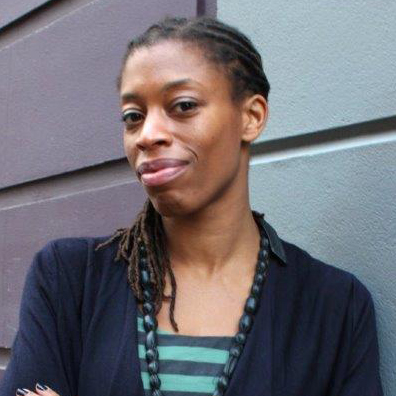Many companies have had to adopt new ways of working at speed. In the most part, they’ve been pleased and proud of how their teams have adapted. It was an experiment in remote working, and they hoped for the best as they felt their way through.

Alison Coward, Founder, Bracket Creative
Join us for the Virtual Business Change & Transformation Conference Europe co-located with the Enterprise Architecture & Business Process Management Conference Europe 26-29 October 2020
This article was previously published here.
However, what would it feel like if you confidently knew that your team was ready to face any challenge and respond resiliently?
The shape of teams has been evolving for a while. People are now moving in and out of teams more frequently or work across different multidisciplinary teams at the same time. Teams might switch to new projects quickly, or there could be changes in their environment which impact their work. Each time one of these things happens, the team dynamic shifts. In recent times, teams may have even experienced all of this happening at the same time, or at least in quick succession.
While this is a disruption, it’s also an opportunity for your team to have productive conversations about how you work together. With the right mindset, tools and awareness, you can reignite engagement, maintain strong connections, and even thrive, in times of change.
Applying design thinking to team culture
You can take a proactive approach to the changes your team might experience by adopting design thinking, defined by IDEO as “a process for creative problem-solving that includes empathy/human-centredness, ideation and experimentation”. According to their primer, it involves: framing a question, gathering inspiration, generating ideas, then making them tangible, testing to learn and telling the story.
Design thinking has a number of principles at its core that help to build and nurture great team cultures:
- Empathy: this is central to the concept of design thinking and human-centred design, and refers to the end-users of a product or service. But a team is full of humans too, which makes it a perfect approach! This means understanding the viewpoint of everyone on the team and their individual situation. Explore collective challenges, pains, opportunities and design your work methods from there. This shift in perspective can have a huge impact by putting your team at the centre of the way you all work and designing outwards. It helps you to work with the reality of a circumstance rather than battling through it.
- Curiosity: design-thinking encourages you to find the right problem before offering or jumping to solutions, which requires asking a lot of questions. This enables you to uncover the root cause of a challenge or problem and make a longer-lasting impact with an appropriate response, rather than applying a quick-fix solution.
- Ideation: it is possible, and highly recommended to apply creativity to your teamwork. By staying open-minded and mindful of not shutting down ideas too early, you and your team can generate potentials for new ways of working. Think of a well-facilitated brainstorm when you imagine new possibilities, reflect and ask open-ended questions starting with “how might we…”. Your team can think positively about what you want to achieve.
- Experimentation: creativity can feel risky. Having a mindset of experimentation liberates your team to not be afraid of failing. It also encourages you to start small when trying new ways of working, which leads to…
- Iteration: as you all learn more about what works, you can make tweaks to adjust and fine-tune new processes. Iteration also reinforces continuous improvement, done gradually and frequently. It’s not about reinventing the wheel, but recognising when there are opportunities for doing things better.
Innovate the way that you work
You might already be familiar with these principles to support innovation in your work with clients or customers. When you apply them to your teamwork, it also creates room to be innovative in the way that you work which can lead to more success and breakthroughs in the work that you do.
Design thinking can help you improve any aspect of the way that you work. For example, building psychological safety, being more creative, providing more support to each other, refining your communication methods. Consider all the habits, routines and rituals that your team has in place, or would like. Then use design thinking to help you review and make progress.
Build regularity
As teams are becoming more dynamic by their nature, designing the way you work is an ongoing activity, not only done in response to a critical event. When your team knows how to apply the tools and principles of design thinking, these activities can happen regularly. As with any new behaviour, this may feel awkward at first. But the more it happens, the more it becomes a natural part of your culture.
It’s more powerful if these skills can exist throughout a team, rather than with just one person or the formal leader. Firstly, it’s a collaborative process that works better if everyone is involved. Secondly, it creates more shared accountability across the team. Every team member can identify opportunities for improvement, then take the lead to facilitate the discussion and action around it. As Brené Brown says in her book Dare to Lead, “a leader is anyone who takes responsibility for finding the potential in people and process, and who has the courage to develop that potential”.
These are the conversations that make a difference between a good team and a great team. A great team pays attention to, practices and persists at getting better. Success isn’t left to chance – they adopt a growth mindset towards their development.
The ability to be intentional about culture, by using design thinking, can alter your team’s experience of a change you face, bringing more resilience and adaptiveness to the challenge. You may not have control over what is happening externally, but when you design the way you work, you and your team do have control over how you respond.
We have a range of remote services to help your team adjust to new ways of working and strengthen your culture in times of change. Find out more.
Alison Coward is the founder of Bracket and author of “A Pocket Guide to Effective Workshops”. She is a strategist, trainer and workshop facilitator. With over 15 years’ experience of working in, leading and facilitating creative teams, Alison is passionate about finding the perfect balance between creativity and productivity. At Bracket she helps teams to use the best of their talents to develop great ideas and collaborate to make them happen.
Copyright Alison Coward, Founder, Bracket Creative


